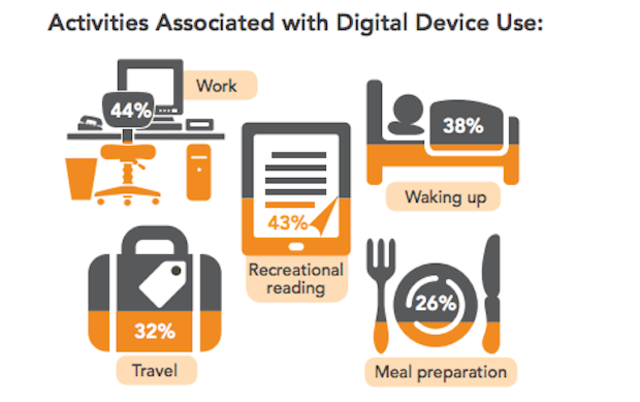Effects of Electronic Gadgets on the Eyes
This is one of the many articles that I have been thinking of posting. Why? People nowadays have been so exposed with electronic gadgets and sometimes forgetting the fact that it can cause us a lot of health troubles and worse is, it can damage our eyesight which for sure we do not want to happen.
I am hoping to bring awareness or remind people to take precautionary measures whenever we have to use gadgets. Let us not forget that prevention is always better than cure.
Electronic gadgets are based on transistors and integrated circuits. Unlike the mechanical gadgets one needs a source of electric power to use it.
We are now in the technology era and electronic gadgets nowadays have been part our lives. It is beneficial to us in many different ways; it helps us with our studies, becomes a vital tool in our work, aids better communication and even very useful in our recreationl activities. We engage ourselves with different activities that involves gadgets and most people become very dependent on it.
According to the vision council, here are the activities that we do which involves the use of gadgets.

How does it damage our vision?
When we look at an object at close range, our eyes work harder to focus than they would if we were looking at something at a longer distance. Looking at electronic screens for lengthy periods of time means that our eyes are constantly working hard to bring the images or text on screen into focus.
What are the effects of overuse of digital devices on eyesight?
The most common side-effect of using digital devices for a prolonged amount of time is Digital Eye Strain. This can be caused by people holding the devices improperly, in most cases, too close to their eyes as a result of small text or pixelated images on screen.
- Another potential cause of eye strain is the high-energy visible light (HEV) commonly emitted by digital devices. Frequent exposure to HEV light, especially at night, can be damaging to eyesight, often causing vision to deteriorate over time.
Overuse of digital devices may cause issues in later life. Computer Vision Syndrome (CVS) is one potential condition, more common for adults, which may arise due to digital screens. The symptoms of CVS include blurred vision, fatigue, headaches, and difficulty focusing. In addition, some people experience back, neck and shoulder pain from hunching over to look at small screens and focus on small text.
- Dryness, caused by reduced blinking while staring at screens, is also a common factor in digital eye strain.
A person's blink rate -- normally about 15-20 times per minute -- can decrease by up to half when people are fixated on what they're viewing on a screen.
"When you're not blinking, and you're staring and your eyes are wide open, tears evaporate very quickly," Starr said. "You get dry spots, blurred vision, it can cause redness, pain, and over the course of the day it just worsens and worsens."
Just like other muscles in the body, the eyes need a varied "workout" and some respite from prolonged strain.
What preventative measures can be taken?
Digital devices have quickly become a staple part of daily life for both adults and children. So it’s hardly surprising that the risks and potential problems associated with the overuse of devices often go unnoticed but, we can take precautionary measures to minimize any potential risk of digital devices. To ensure that we use digital devices in a healthy way
- Go for regular eye checks.
Most specially to children, vision is critical to their learning and development, making regular checkups with an Optometrist essential in younger years. Your Optometrist will adjust their examination in accordance with the age. Make sure you let the optometrist know about any family history of eye or vision problems.
- When using a computer, place a light source behind you.
When you are on the computer, avoid placing a light source behind the screen, as your eyes will struggle to adjust to the two often glaring and competing light sources.Instead, place your lamp to the side or behind you to avoid discomfort and eye strain.
- Always sit at an arms distance away from your screen.
Sitting too close to a screen can cause discomfort, stress and strain on your eyes and can be a sign developing short-sightedness or Myopia. To prevent this, always sit at least an arm’s length away from your screen.
- Every 20 minutes spent staring at a screen; spend 20 seconds looking at something 20 ft away.
The 20/20/20 rule (for every 20 minutes spent on a digital device, spend 20 seconds looking at something 20 feet away). Designating a specific time period for digital use, with intermittent activities arranged between these times, will allow your eyes to relax.
Anti-reflective lenses on eyeglasses or filters for screens can also help absorb some of the blue light and limit how much reaches the retina and into the central nerve of the eye.
Although we can only speculate on the digital wonders that may lie ahead, it does seem apparent that no matter what is invented it will be taxing our eyes. From tablets, smartphones, TVs, computers, and even head-up displays, our eyes are subject to a constant barrage of digital input. We must take action now if not only to protect our eyesight for here and now, but also to engrain good habits for the future.
References:
https://www.lenstore.co.uk
https://www.cbsnews.com/news
http://optometrytimes.modernmedicine.com
.jpeg)
Done upvoting and followed also
Thank you @mommabutterfly. Thanks for stopping by.
It is crazy how the blue light of technical devices is influencing our health in a bad way ... thanks for sharing @ayingroxie!
These little devices are just to useful ... 😅
Just tried the 20/20/20 rule and it felt much better after sitting for 2 hours in front of my desk ..
It is indeed helpful. Thank you for stopping by.